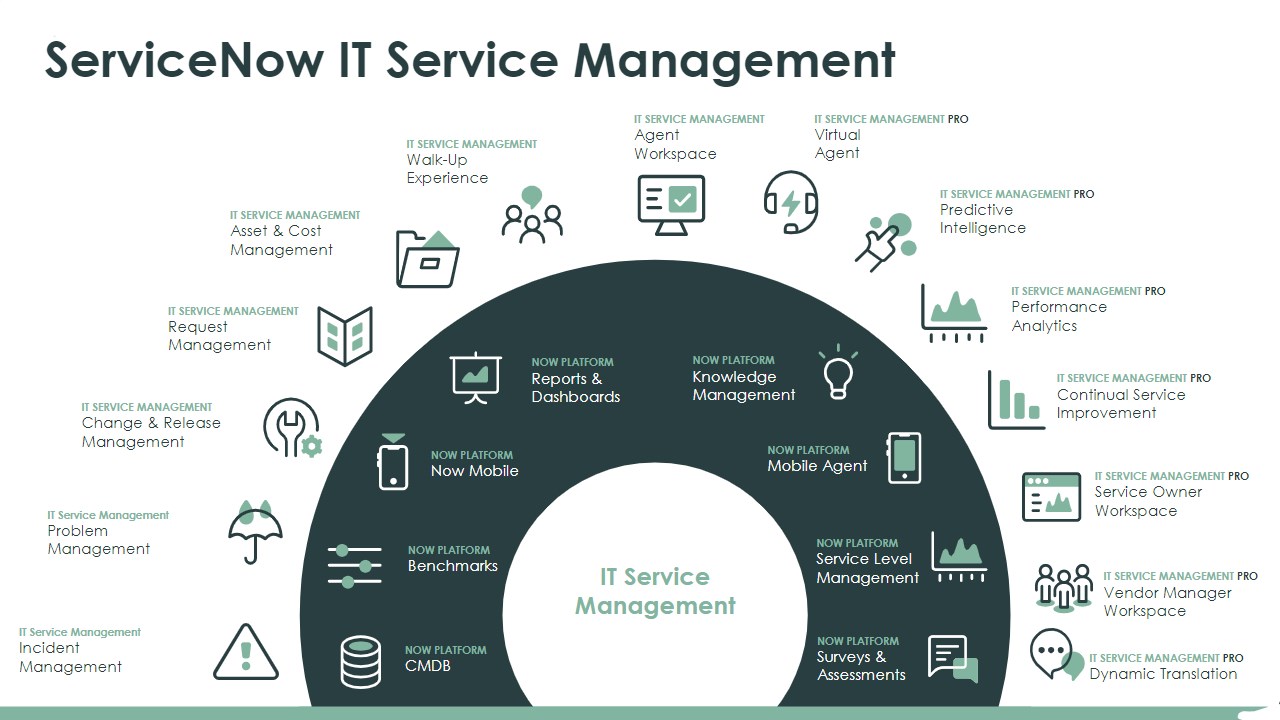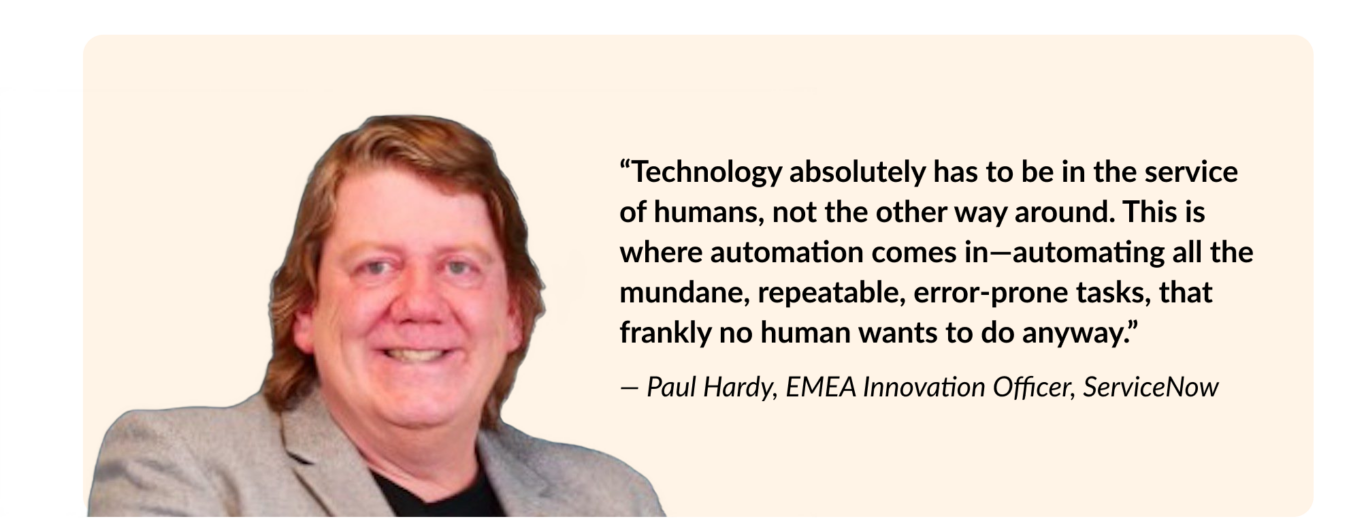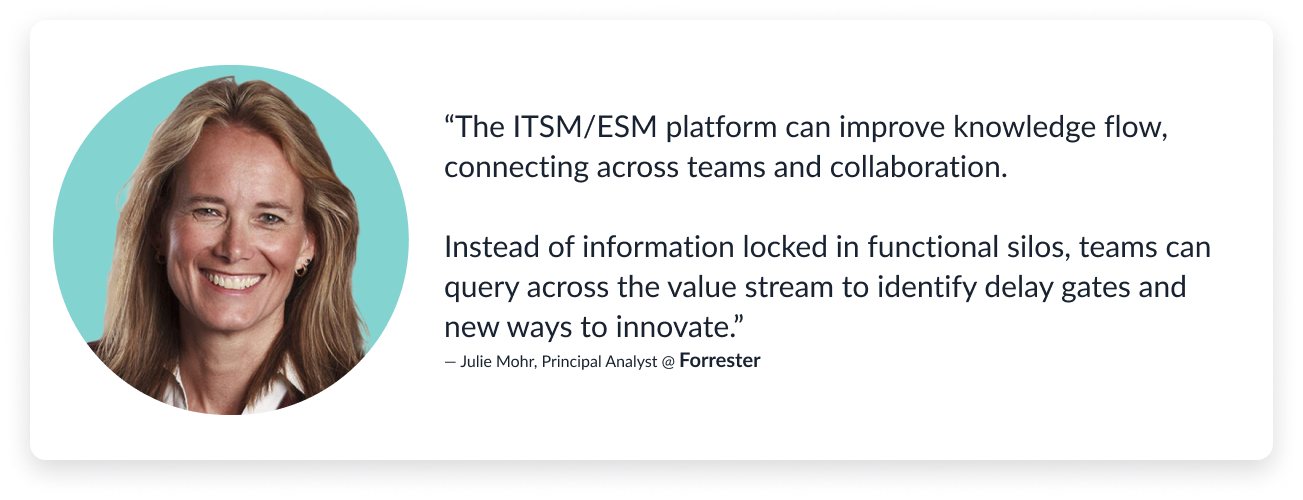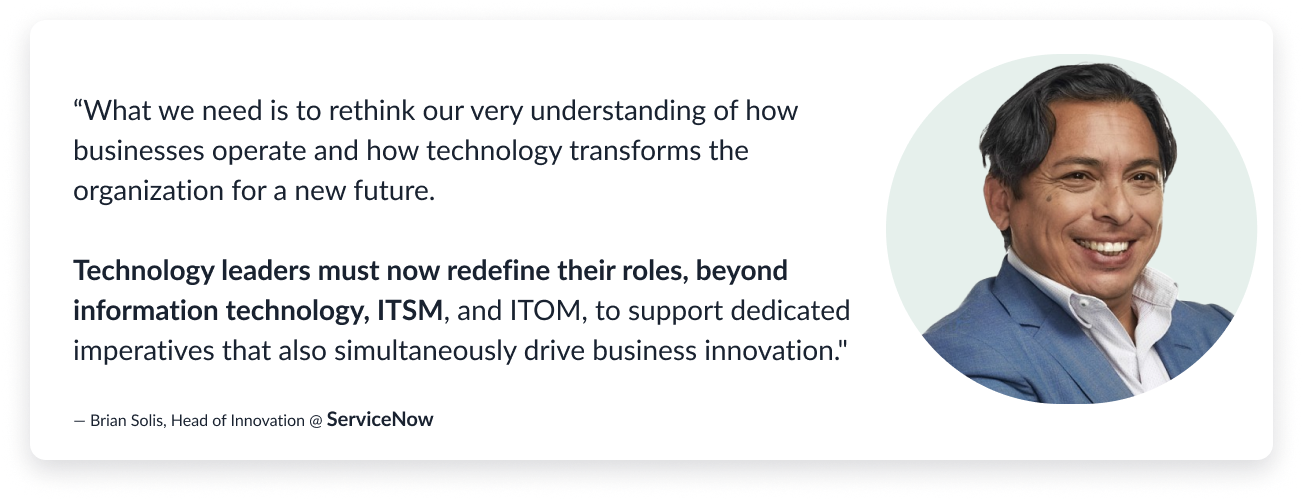An Overview of IT Service Management (ITSM) in ServiceNow
Information Technology Service Management, also known as ITSM, refers to the practical services, routines or software owned by a modern IT department. Although we’re focusing on ITSM in ServiceNow, the same ideas and principles of IT service management apply to any ticket management system.
If you’ve ever struggled with frustrating delays related to computer problems at work, or had to manage lengthy backlogs of IT service management tasks, ITSM is the process designed to mitigate those issues.
The goal of a well-run ITSM process is to ensure an organization smoothly keeps the business’s tech stack running as intended. An ITSM platform simplifies the day-to-day operations of that modern IT department in tools such as ServiceNow or Jira Service Management
And these operations are growing more critical, due to the rise in global competition in the tech sector especially, a rise in cybercrime activity internationally with the total annual cost expected to surpass $10 trillion USD by 2025 according to Ipsos
ServiceNow is one of the most popular platforms to serve these needs. While the IT service management leader offers a wide range of add-ons and packages, this article will focus exclusively on ServiceNow ITSM with details on available modules and packages.

In this article
- Why choose ServiceNow ITSM?
- An expert’s opinion on ITSM
- ServiceNow ITSM Packages
- List of ServiceNow ITSM Modules
- ServiceNow ITSM Efficiencies & Benefits
- The future of ServiceNow and ITSM
- Integrations – the next step to optimizing your ITSM practices
- Use Case: Collaboration between IT and Engineering
- Use Case: Expanded Incident Creation with Predictive Intelligence
Why choose ServiceNow ITSM?
First, what are the systems within ServiceNow that make it such a vital platform for ITSM?
- Swift Problem Resolution: This system is designed to get to the root of IT issues, minimizing downtime that impacts employees and customers. Here’s an overview of ServiceNow Problem Management.
- Optimized IT Costs: Users can gain visibility into spending, cost management, and optimization by consolidating their tech stack for better ROI. More on ServiceNow cost optimization and management.
- Security & Compliance: ServiceNow conforms to strict security frameworks and protocols to safeguard sensitive user data and meet regulatory standards.

So not only is ServiceNow a platform that can provide robust security measures, a more optimal process for IT management, but it’s also a company that frequently promotes values around end user satisfaction and customer satisfaction.
This approach has paid off. ServiceNow has ranked in Gartner’s Magic Quadrant for IT Service Management for over eight years. In 2023, ServiceNow ranked among the top leaders of Gartner’s Magic Quadrant for IT Service Management programs

An expert’s take on ITSM
Adopting ITSM frees up your team’s time for tasks that involve their primary skillsets, which helps streamline complex IT processes and procedures. This approach doesn’t just fix IT problems; it transforms how these teams and departments operate. Industry experts agree that a well-implemented ITSM solution leads to significant improvements across the board.
“The benefits of having all your operations on a single platform are everything from better reporting to improved insights and an overall better understanding of the value streams that serve crucial stakeholders. Better insights mean organizations can make iterative improvements to service delivery. But more than just insights, the ITSM/ESM platform can improve knowledge flow, connecting across teams and collaboration. Instead of information locked in functional silos, teams can query across the value stream to identify delay gates and new ways to innovate.”
Julie Mohr, Principal Analyst at Forrester
In short, a platform like ServiceNow ITSM helps businesses get the most out of their technology investments, improving both efficiency and user experience. That’s why ServiceNow is trusted by major brands, including T-Mobile, Deloitte, Zoom, Accenture, and Syntax.

Now, let’s explore the key modules within ServiceNow that make these benefits possible.
ServiceNow ITSM Packages
ServiceNow offers dozens of modules broken down into three core ServiceNow packages to help you optimize your service management processes. Let’s review them to see which best suits your business needs.
Standard Package for ITSM
- Ideal for: Growing businesses and smaller IT teams needing essential incident, problem, change, and request management capabilities. This gives you a solid foundation to manage IT workflows effectively.
- Benefits: Streamline core IT service processes and establish a system of record for assets and cost management. The Walk-Up Experience offers a dedicated area to provide in-person support to improve user experiences.
Pro Package for ITSM
- Ideal for: Scaling businesses focused on automation and self-service. ITSM Pro is for teams wanting to reduce manual tasks and empower users to solve issues independently.
- Benefits: Predictive Intelligence helps you address issues before they become major disruptions. Automate routine tasks and drive self-service adoption. Performance Analytics gives deeper insights into service desk performance to drive continuous improvement.
Enterprise Package for ITSM
- Ideal for: Large enterprises seeking maximum process optimization, cost control, and operational speed. This package is best for IT teams with complex processes, multiple stakeholders, or stringent compliance requirements.
- Benefits: Optimize team resources with Workforce Optimization and delve deeper into processes with Process Mining. Drive down costs, improve vendor relationships, and streamline IT operations at scale.

List of ServiceNow ITSM Modules

These modules cover a variety of applications and capabilities that can be configured and adjusted to your needs:
Now Assist
Now Assist is an AI-driven virtual assistant that allows employees to self-serve for support related to password resets, knowledge articles, and raising incidents or requests. That means fewer service requests for your IT teams and a better service overall.
- Who it’s for: Employees and IT support staff
- Why consider: Reduces ticket volume for IT, empowers employees to find solutions independently, leading to faster resolutions and increased service desk efficiency.
Configuration Management Database (CMDB)
Configuration Management Database (CMDB) is a central repository for all IT infrastructure components (hardware, software, network devices, etc.) and their relationships.
- Who it’s for: IT support staff, infrastructure teams, change management
- Why consider: Provides a foundational view of the IT environment, enabling effective incident resolution, problem analysis, change impact assessment, and asset management.
Knowledge Management
Knowledge Management is a structured knowledge base for storing and sharing troubleshooting tips, FAQs, and best practices.
- Who it’s for: Employees and IT support staff
- Why consider: Facilitates knowledge sharing, promotes self-service, reduces repetitive queries, and improves internal knowledge consistency. This also streamlines the building of a self-service portal for employees.
Incident Management
Incident Management tracks and manages disruptions to IT services, aiming to restore operations as quickly as possible.
- Who it’s for: IT support staff
- Why consider: Streamlines and standardizes incident handling, improves incident response time, and allows for incident trend analysis for proactive prevention.
Change Management
Change Management ensures changes to IT infrastructure are implemented in a controlled and authorized manner.
- Who it’s for: IT support staff, change managers, infrastructure teams
- Why consider: Reduces the risk of incidents caused by poorly planned changes, minimizes downtime incurred during changes, and improves coordination across IT teams.
Virtual Agent
Virtual Agent is a chatbot for automating conversations and resolving common requests/incidents.
- Who it’s for: Employees and IT support staff
- Why consider: Provides 24/7 support, deflects common tickets, and improves the user experience.
Predictive Intelligence
Predictive Intelligence uses machine learning to categorize, route, and predict the potential for issues or risks based on historical data.
- Who it’s for: IT support staff, problem managers
- Why consider: Reduces time spent on manual tasks, prevents incidents, and prioritizes work based on potential impact.
Service Operations Workspace
Service Operations Workspace: Modern workspace for IT support agents with advanced tools and visual layout for better ticket routing and resolution.
- Who it’s for: IT support staff
- Why consider: Streamlined UI, improves productivity, and allows agents to work on multiple cases faster.
Now Mobile
Now Mobile offers a native mobile app for accessing core ServiceNow features on the go.
- Who it’s for: Employees and IT support staff
- Why consider: Enhances mobile accessibility for approvals, ticket updates, and self-service.
Digital Portfolio Management
Digital Portfolio Management provides a project and portfolio management view for IT, aligning investments with business goals and strategies.
- Who it’s for: IT leadership, project managers
- Why consider: Centralizes IT project data, improves decision making, and links IT spend to business value.
DevOps Change Velocity
DevOps Change Velocity manages the speed and integrity of software changes for businesses using DevOps practices.
- Who it’s for: Developers, IT operations, release managers
- Why consider: Increases release frequency safely, provides performance analytics and insights on the DevOps pipeline, and promotes collaboration between development and operations teams while giving actionable insights to their leaders.
Employee Center
Employee Center offers a unified portal for employees to access HR, IT, and other company services/resources.
- Who it’s for: All employees
- Why consider: Centralizes employee needs in a modern interface, boosts self-service across departments, and provides personalized experiences.
Service Portal
Similar to Employee Center, Service Portal is a user-facing interface for requesting IT services, accessing knowledge, and tracking the status of requests or incidents.
- Who it’s for: Employees and customers seeking support
- Why consider: Consumer-like experience, promotes IT self-service, and allows for customization to match your organization’s branding.
Problem Management
Problem Management: Seeks to find the root cause of recurring incidents, preventing them from happening in the future.
- Who it’s for: IT support staff, particularly problem managers
- Why consider: Proactive problem resolution reduces incident volume over time, improves service availability, and frees up IT resources.
Service Catalog
Service Catalog: An online storefront where users can request predefined IT services like software installations, hardware provisioning, or account setups.
- Who it’s for: Employees needing IT goods or services
- Why consider: Standardized ordering process, improves efficiency for common requests, and provides transparency into the IT service offerings.
Asset Management
Asset Management tracks all hardware, software, and cloud assets throughout their lifecycle, including ownership, financial information, and contracts.
- Who it’s for: IT asset managers, finance, procurement
- Why consider: Helps optimize usage and costs of assets, enables informed procurement decisions, and ensures software license compliance.
Workforce Optimization
Workforce Optimization uses data and analytics to manage the deployment and productivity of your IT support workforce.
- Who it’s for: IT service desk managers, workforce planners
- Why consider: Proactive staffing for workload shifts, optimizes skill assignments, and identifies training needs for improved efficiency.
Process Mining
Process Mining analyzes process data within ServiceNow instances to discover bottlenecks, inefficiencies, and non-compliance.
- Who it’s for: Process owners, IT leadership
- Why consider: Facilitates data-driven process improvement, enables visualization of complex process flows, and identifies areas for automation.
Contract and Renewal Management
Contract and Renewal Management is a central repository for tracking contracts and their renewal dates.
- Who it’s for: Finance, procurement, legal, IT teams
- Why consider: Improves visibility into contract spending and timelines, enables better negotiation, and prevents service lapses from missed renewals.
Continual Improvement Management
Continual Improvement Management provides structured methodologies for finding and prioritizing improvements across IT services.
- Who it’s for: Process owners, IT leadership
- Why consider: Fosters a culture of continuous improvement, ensures that IT efforts align with business needs, and enables reporting on improvement initiatives.
Site Reliability Operations (SRE)
Site Reliability Operations (SRE) is focused on the reliability and performance of applications and services, with an engineering focus.
- Who it’s for: SRE teams, IT operations
- Why consider: Enables data-driven approach to system reliability, promotes automation to reduce toil, and helps define service-level objectives (SLOs).
DevOps Config
DevOps Config manages configuration data associated with DevOps practices across development, testing, and production.
- Who it’s for: Developers, IT operations
- Why consider: Centralized configuration management promotes consistency and ensures auditability within the DevOps ecosystem.
Request Management
Request Management handles general user requests for information or resources (not necessarily incident or service-related).
- Who it’s for: IT teams, other departments
- Why consider: Streamlines and tracks all types of user requests.
Service Level Management (SLM)
Service Level Management (SLM): Defines, monitors, and reports on service level agreements (SLAs) between IT and the business.
- Who it’s for: IT service managers, IT leadership
- Why consider: Sets clear performance expectations, ensures service quality alignment.
Key Considerations for your own ServiceNow package:

ServiceNow ITSM can help your team focus on high-level tasks more relevant to each member’s role, but only if you choose the right module to suit your needs. So factors worth considering include:
- Team Size & Roles: Evaluate team size, roles involved in service management, and existing levels of automation or self-service.
- IT Complexity: The complexity of your IT environment and the number of systems you manage will impact your package choice.
- Future Scalability: Think ahead – how much do you expect your business to grow, or your IT needs to evolve in the near future?
- Cost: ServiceNow can be an investment, particularly the Pro and Enterprise packages. Consider potential ROI carefully against your budget.
- Complexity: ITSM Pro and Enterprise packages introduce additional features, which can increase the learning curve and implementation time.
ServiceNow ITSM Efficiencies & Benefits
Without ITSM, you could be losing time, resources, and revenue you weren’t even aware of. It’s much like survivorship bias – we focus on what we can see, not what we don’t see. You can’t see the opportunity cost of not implementing ITSM, but it’s there nonetheless.
If your problem-solving process is inefficient, employees and customers could end up feeling frustrated and dissatisfied as your organization grows and loses the ability to keep track with the rise in demand and workload. A lack of ITSM can also lead to accountability and compliance concerns and put you at a higher risk of security breaches. So how does ServiceNow ITSM factor in?
- Self-solve issues 24/7 and eliminate wait times by keeping international teams connected through a centralized hub.
- Automate services with continuous improvement and AI support.
- Collaborate and find answers quickly by focusing on individual incidents with visibility on each member’s activity.

Alternatives to ServiceNow
As of 2024, Gartner’s list of the top IT Service Management platforms also includes: TOPdesk, SymphonyAI, Team Dynamix, and EV Service Manager.

The future of ServiceNow and ITSM
Without ITSM, you risk the chance of security breaches, disorganization, financial drain, lack of efficiency, and employee and customer dissatisfaction. Integrating ITSM can help you thrive. Optimizing ITSM can help workflows and enhance the employee and customer experience, providing time to focus on what matters.

So, what does the future hold for ServiceNow and ITSM in 2024 and 2025? Here are some key trends to watch for:
- AI-Powered Automation: Expect ServiceNow to deeply integrate AI and machine learning for enhanced automation throughout ITSM workflows. This will streamline tasks, predict potential issues, and free up IT teams for strategic projects.
- Hyperautomation: ServiceNow platforms will increasingly tailor experiences based on user roles, needs, and past interactions. This leads to higher self-service success rates, faster issue resolution, and more satisfied employees and customers. It’s already begun with the introduction of ServiceNow’s focus on Hyperautomation.
- Focus on Employee Experience: ITSM will shift beyond technical troubleshooting to encompass the entire employee experience. ServiceNow’s efforts to boost employee experience will be led by tools that simplify onboarding, knowledge management, and cross-departmental collaboration, all within the ITSM ecosystem.
- Rise of the Service Platform: The future of IoT cloud services will see ServiceNow become an even more critical, central service delivery platform, extending beyond IT. Expect integrations that allow HR, Facilities, and other departments to leverage the same ITSM framework, boosting enterprise-wide efficiency.
- The Cloud and Low-Code: Continued emphasis on cloud-based solutions and customization will empower businesses of all sizes to tailor ServiceNow and ITSM to their specific needs. How will they get there? The future belongs to low-code and 2-way sync.
Integrations – the next step to optimizing your ITSM practices
ServiceNow ITSM is fantastic at managing IT processes, but it’s not always the only option or tool used by large organizations. What if some departments need help from software developers in Jira or Microsoft Azure DevOps?
Perhaps your ticketing is handled by a team in Zendesk in one region, and ServiceNow in another? What if you need to share key incident details in bi-weekly or monthly reports by uploading data to a spreadsheet such as Google Sheets or Excel?
Maybe you need to collaborate with a project manager in Smartsheet, Asana, or Wrike?
When it comes to integrating Servicenow: there is IntegrationHub for those who can handle complex coding solutions. But there are alternatives to IntegrationHub. Unito is a low-code 2-way solution designed to offer a simpler approach to integration powered by live 2-way sync.
Integration Use Case: Collaboration between IT and Engineering
Picture this: A critical customer-facing application crashes and support tickets are flooding your service portal. The IT service desk is inundated with angry end users who need answers fast. The root cause turns out to be a recent code change that wasn’t deployed properly in Jira or GitHub. With ServiceNow and Unito’s 2-way integration, your IT and Development teams can:
- Automate Jira Ticket Creation: A support agent escalates the ServiceNow incident to the IT department, and a corresponding issue is automatically created in Jira, including all relevant diagnostic details about each incident.
- Real-time Collaboration: Changes to the status of the Jira issue update the ServiceNow incident and vice-versa, keeping both teams informed. Developers and IT staff can even comment directly within each other’s systems.
- Swift Resolution: Engineering fixes the bug and deploys the update. Once confirmed in Jira, the ServiceNow incident is resolved, and automated notifications keep impacted users in the loop.
Here’s Unito’s technical documentation on 2-way ServiceNow integration.
Watch a demo integration between ServiceNow and Jira
Integration Use Case: Expanded Incident Creation with Predictive Intelligence
Predictive Intelligence‘s ticket triage, classification and routing, as well as incident detection ensure that new tickets are dispatched to the right team immediately, empowering your IT department to take swift, informed action based on detailed incidents.
Paired with Unito, you could set up an even more sophisticated incident triage and assignment process:
- ServiceNow triages and categorizes the incident automatically.
- The ticket is then assigned to the IT department for investigation and resolution. If that team member works outside of ServiceNow (perhaps in Azure DevOps); Unito then jumps in to create a mirrored work item in ADO.
- The work item in ADO is then kept in 2-way sync with the original incident in ServiceNow. As the team in ADO updates everyone else on their progress, the ServiceNow incident updates automatically as well.
Here’s a comparison between ServiceNow IntegrationHub and Unito.


